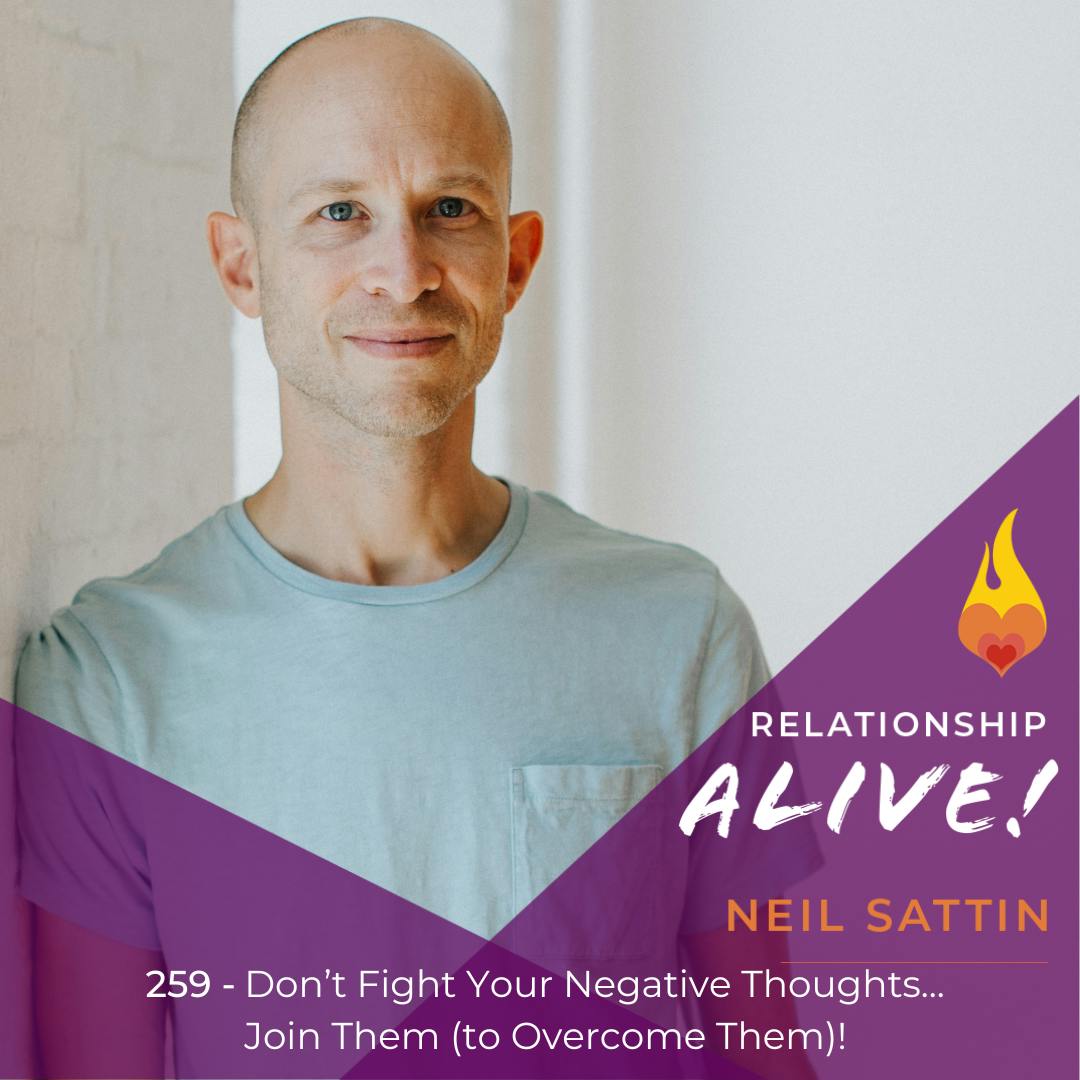What do you do when you feel like your relationship is going in the wrong direction? How do you find new things to try when you feel like you’ve tried everything? And what’s possible for you when you’re going it alone - perhaps when your partner already has one foot (or both feet) out the door? On today’s episode, we are chatting with Michele Weiner Davis, author of the bestselling books Divorce Busting, The Sex-Starved Marriage, and The Divorce Remedy. Her solution-focused therapy has helped thousands of couples come back from the brink of separation and divorce to a place of lasting, thriving love.
You can’t figure this stuff out by meditating on the top of a mountain. We are not necessarily born with the skills required to have healthy and happy relationships. Instead, we learn by watching our adult caregivers, and for many of us, this means that we did not have great role models or teachers. That said, it is possible to learn these skills, including how to navigate conflict with grace and compassion, how to show tenderness, how to communicate needs lovingly, etc. We learn how to actively love within the context of our relationships- and our relationships are always giving us teaching opportunities. In order to grow from these lessons, it is critical that we pay attention to our roles, patterns, and habits in the relationship. More often than not, one’s relationship patterns will follow them into any subsequent relationship. This may explain why first marriages end 42% of the time, but the rates of divorce for 2nd and 3rd marriages is much much higher. So, be willing to get into the weeds and to learn everything you can about how to have a good, healthy, and loving relationship now!
It takes one to tango: Do you feel like you are taking on your relationship alone? That your partner isn’t as interested or willing to ask the hard questions? One big assumption in relationships is that change has to take two people. The truth is that when one person makes changes in a relationship, their partner will change in response. You CAN effect change singlehandedly in a relationship as long as you are willing to take the first steps! You have nothing to lose (and everything to gain) by taking the initiative and trying a new approach to making changes in your relationship- tip the first domino and watch how you can be a catalyst for big shifts.
STEPS: These steps are for anyone who wants to turn their relationship around (or simply to feel better):
Step 1) Start with a beginner’s mind: Many people have loads of misconceptions about marriage in general, and long-held stories about their own. Often these assumptions and fictions are limiting and debilitating, creating an invisible context that silently stifles the relationship and gets in the way of what is needed to make things better. Get curious and bring awareness to the beliefs you hold about the concept of marriage/partnership, and check in with the stories you may have created about what is possible in your own.
Step 2) Know what you want: Many people spend a lot of energy and time cause hunting- meaning they focus on places in their relationship that are no longer working. Try to look concretely at what is working and forward to where you want to be. By identifying specific steps necessary to achieve what you would rather have, you can begin to set goals. These goals should be action-oriented, measurable, and doable.
Step 3) Ask for what you want: Once you know your goals, you will be more prepared to lovingly communicate your desire for change to your partner in a way that will likely bring you both closer to what you want, and away from the shame/blame cycle. Asking for change when you have taken the time and energy to identify your own responsibility as well as specific steps forward will mean that your partner will hear a request for change rather than a complaint. Complaints lead to defensiveness and your partner is much less likely to be curious, open, or willing to comply. Be intentional about your timing- trying to have a heart to heart while in the midst of dishes, kids, and chaos is not the time. Find quietude, and preface the conversation with conciliatory and loving statements, such as “I know you don’t mean to do this, and I haven’t been open enough with you about how this has affected me, however I would love to talk about…”. From here, be specific! Ask for what you want and help paint a path forward with concrete action steps.
Step 4) Stop going down cheese-less tunnels. Where in your relationship do you find yourself getting stuck over and over? Are you saying and doing the same thing repeatedly? Is there one place your partner really digs in their heels? Bring curiosity to stuck places as these are likely the result of consistent yet ineffective attempts to intervene and fix. Look inward and ask yourself what patterns you may be repeating that have not yet worked. The want to fix can be so strong, and the pain of disappointment or discontentment so great, that we can blind ourselves to how we may actually be exacerbating the conflict or stagnancy. Thankfully, doing something different usually brings enough movement to break free from toxic cycles of behavior, and into creativity and possibility!
Step 5) Experiment and Monitor Results: Begin to experiment. Have a trial and error philosophy- try doing things differently- it almost doesn’t even matter what you do, because anything will be better than what hasn’t been working. Remember that spontaneity is a powerful force in relationships as it breaks patterns and opens new doors that allow for more creativity. What other actions might you be able to take that are different than your status quo? Embrace the idea that it is probably and possible that if you approach things differently, you WILL get different results!
Step 6) Take Stock: As you begin to make shifts, keep your eyes open for signs of shifting and change. Do not expect big tectonic plate sized shifts, but rather become keenly aware of microshifts, training yourself to look for small signs. Is there a change in your partner’s tone? Are they asking different questions? Body language shifts? Are they initiating conversation differently? Scale expectations down and look for the baby steps forward. This is not because big shifts are not happening, but rather because the more small shifts you can appreciate and notice, the more encouraged you will feel and this alone will bring new energy and vitality to your relationship!
Step 7) Keep the Positive Changes Going: Lasting change has setbacks- the road to positive lasting change is paved with many ups and downs. What separates those who can sustain and grow over time from those that get stuck and resentful is the willingness to take personal responsibility in the context of their relationship. Don’t wait for your partner to come to you. Take personal responsibility for doing what you need to do in the moment to get your relationship back on track on any given day.
Positive change buttons: We all know those things that we can say that really gets under our partner’s skin. Those hot button topics or statements that tick them off and totally and immediately send them into defense. Well, this ability to so quickly change the mood can be used in reverse as well! Take time to notice what brings your partner to life and makes them feel good- then begin to incorporate these ‘positive change buttons’ throughout the day!
Last resort technique? Do you feel you are in the 11th hour of your relationship? When it feels like all else has failed, the last resort technique helps with skills that work to turn things around, even without the direct support of your spouse. If you feel like you have done everything to save your marriage, but you are losing steam or hope, begin by taking a deep breath and several steps backwards. You want to break the toxic victim/defender dynamic. At this point your partner may be used to being pursued intensely, so try to stop chasing. Turn towards yourself and focus on your own growth- exercise, meditate, find friends, go out, rediscover self-care. By focusing on your own wellbeing you will feel more confident, grounded, and independent, and often, this will not only just make you feel better but it will likely bring your partner closer!
This didn’t save my marriage but it did save my life: All of the steps outlined above, including the last resort technique, will help you get grounded into yourself. They connect you with what you hope for in your relationship and your life, and to a greater sense of optimism that comes from a sense of increased clarity and capability. These steps may not necessarily save your relationship, however they will leave you feeling independent, strong, clear and inspired.
Resources:
Learn more about Michele’s work and find more resources on her website
Call today to schedule a consultation! 1800-664-2435
Feedback? Questions? You can contact Michele directly at: michele@divorcebusting.com
https://www.neilsattin.com/busting Visit to download the show guide, or text “PASSION” to 33444 and follow the instructions to download the show guide to this episode with Michele Weiner Davis.
The Railsplitters - Check them Out


